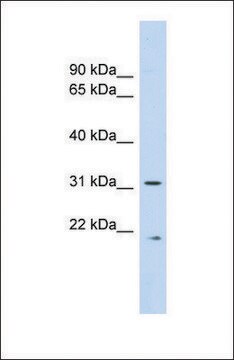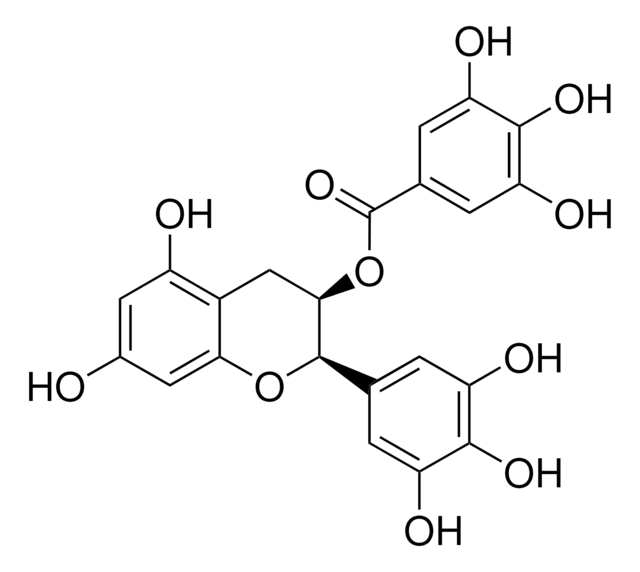C0355
Monoclonal Anti-μ-Calpain, Large Subunit antibody produced in mouse
clone 15C10, purified immunoglobulin
Synonym(e):
Anti-CANP, Anti-CANP1, Anti-CANPL1, Anti-SPG76, Anti-muCANP, Anti-muCL
About This Item
Empfohlene Produkte
Biologische Quelle
mouse
Qualitätsniveau
Konjugat
unconjugated
Antikörperform
purified immunoglobulin
Antikörper-Produkttyp
primary antibodies
Klon
15C10, monoclonal
Mol-Gew.
antigen 80 kDa
Speziesreaktivität
rat, mouse, human, bovine
Methode(n)
immunoprecipitation (IP): 1-2 μg
indirect ELISA: 0.5-1 μg/mL
western blot: 0.5-1 μg/mL
UniProt-Hinterlegungsnummer
Versandbedingung
wet ice
Lagertemp.
−20°C
Posttranslationale Modifikation Target
unmodified
Angaben zum Gen
human ... CAPN1(823)
mouse ... Capn1(12333)
Verwandte Kategorien
Immunogen
Physikalische Form
Haftungsausschluss
Sie haben nicht das passende Produkt gefunden?
Probieren Sie unser Produkt-Auswahlhilfe. aus.
Lagerklassenschlüssel
10 - Combustible liquids
WGK
WGK 2
Flammpunkt (°F)
Not applicable
Flammpunkt (°C)
Not applicable
Hier finden Sie alle aktuellen Versionen:
Besitzen Sie dieses Produkt bereits?
In der Dokumentenbibliothek finden Sie die Dokumentation zu den Produkten, die Sie kürzlich erworben haben.
Unser Team von Wissenschaftlern verfügt über Erfahrung in allen Forschungsbereichen einschließlich Life Science, Materialwissenschaften, chemischer Synthese, Chromatographie, Analytik und vielen mehr..
Setzen Sie sich mit dem technischen Dienst in Verbindung.






